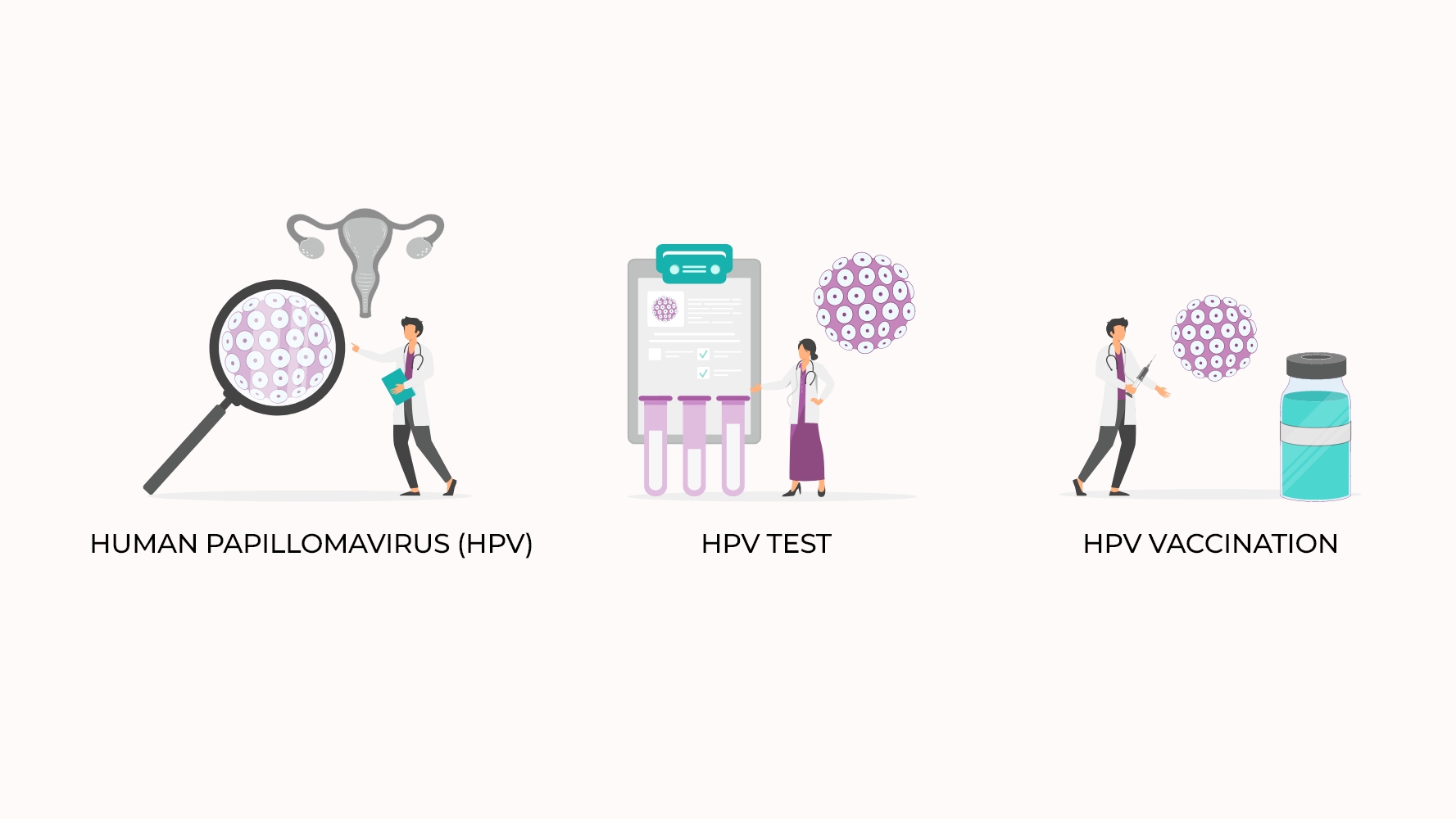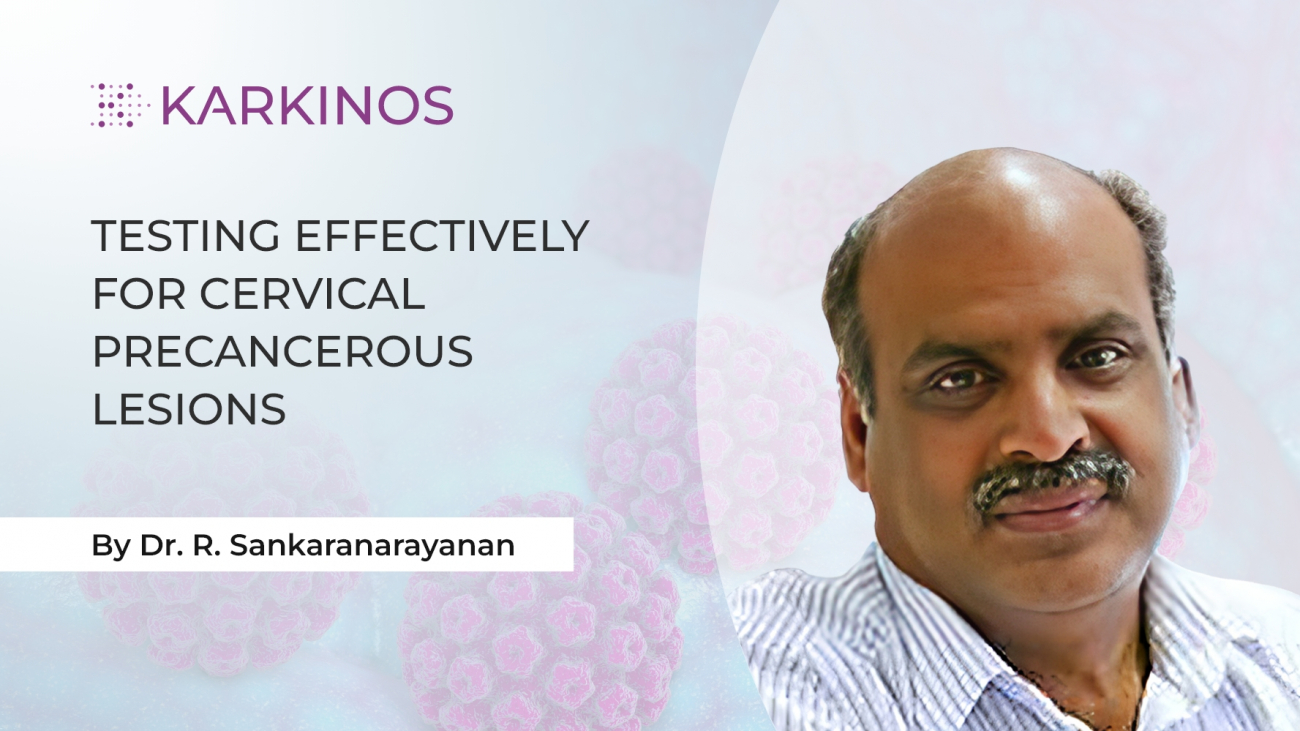Early detection and treatment of cervical precancerous changes can prevent cancer
By Dr. R. Sankaranarayanan, Director, Preventive Oncology, Karkinos Healthcare
Cervical cancer is the second most common cancer in Indian women. Every year 124,000 women are diagnosed with this cancer in the country, mostly in advanced disease stages, such as stage II and stage III, when cure rates are lower than 40% and treatments are radical, time consuming, and inaccessible and unaffordable for many patients.
However, many people do not realise that this cancer is preceded by precancerous changes in the cervix that remain for several years before becoming cancer and these changes can be readily detectable by screening and effectively treatable by simple day care treatments.
What are precancerous lesions?
Precancerous lesions of the cervical cancer are changes to the cervical cells in an area called the transformation zone in the cervix, which surrounds the opening of the cervix into the cervical canal. These changes are collectively called Cervical Intraepithelial Neoplasia (CIN) and Adenocarcinoma in-situ (AIS).
CIN is further categorised as grade 1 (CIN1), grade 2 (CIN2), or grade 3 (CIN3) depending upon the depth of involvement by the cellular changes of the epithelium covering the outer surface of the cervix. These lesions are also called stage 0 cancer. They are caused by persistent infection of the genital tract by one of the 14 types of cancer-causing Human Papillomaviruses (HPV) – HPV 16, 18, 31, 33, 35, 39, 45, 51, 52, 56, 58, 59, 66, and 68.
Testing for precancerous lesions
HPV infection is almost ubiquitous and affects almost everyone at some point in time in their early reproductive life after sexual debut. But it disappears itself in more than 90% of women within 2 years from getting infected. The infection, however, persists in 5-10% of infected women and may lead to cellular changes in the cervix that transform to precancerous lesions in a proportion of the persistently infected women. A significant proportion of CIN2 or CIN3, collectively referred to as high-grade CIN lesions, can progress to cervical cancer if not detected and treated in time.
The cervical precancerous changes (CIN and AIS) do not cause symptoms. They can be detected only by screening the cervix with early detection tests that have the ability to identify women who are likely to have the precancerous changes or likely to develop it in future.
The cervical precancerous changes (CIN and AIS) do not cause symptoms. They can be detected only by screening the cervix with early detection tests that have the ability to identify women who are likely to have the precancerous changes or likely to develop it in future. There are several types of cervical screening tests to identify women who are more likely to have either CIN or AIS or early-stage cervical cancer.
The most widely used cervical screening tests include Pap smear (conventional cervical cytology), testing for cancer causing HPV infection (HPV testing), Liquid Based Cervical Cytology (LBC: Sure Pap, Thin prep), and Visual Inspection with 3-5% acetic acid (VIA).
Pap smear involves collecting cells from the surface of the cervix using a small brush and making a smear on a glass slide that is processed with special stains and checked under a microscope to detect precancerous or cancerous changes in the smear of cervical cells.
LBC involves making a suspension of collected cervical cells in a special medium that is processed to produce a thin layer of cells on a slide that is stained and checked under a microscope. VIA involves looking at the cervix with the naked eye after applying dilute white vinegar (3-5% acetic acid) to see if well-defined white lesions appear on the cervix which might indicate the presence of CIN.
HPV testing involves looking for the presence of one or more of the 14 high-risk types of HPV infection in collected cervical cells. HPV testing is the most accurate, reproducible, and sensitive test to detect CIN and AIS compared to Pap smear, LBC, and VIA.
The World Health Organization recommends HPV testing as the most preferred test over other screening tests.
The World Health Organization recommends HPV testing as the most preferred test over other screening tests. HPV testing is recommended for all apparently healthy women above the age of 25 or 30 years and may be repeated once in 5 years or 10 years if the baseline test is negative for infection.
A major advantage of HPV testing is that if the woman is negative on testing, she is unlikely to develop CIN or AIS in the following 5-10 years and her lifetime risk of developing cervical cancer is extremely low.
Thus, it can be repeated at longer intervals like 10 years, unlike Pap smear and VIA, which needs to be repeated every 3-5 years. Even a single lifetime or twice a lifetime HPV testing at 35 and 45 years might be sufficient to prevent cervical cancer in a large proportion of women.
The results of currently available HPV tests indicate if a woman is positive or negative for infection with one or more of the 14 high risk HPV type(s), and if positive, the HPV type(s) in the sample. Those positive for HPV 16 or HPV 18 infection are more likely to harbour a precancerous change compared to other 12 types. Of all cervical screening tests HPV testing is the most effective to detect cervical precancerous changes.
Screening must be linked to diagnosis and treatment of precancerous lesions as screening alone has no preventive value. If HPV testing or Pap smear or LBC or VIA is positive, they will be further examined by colposcopy that involves a magnified, detailed visual inspection of the cervix using a special binocular magnifying device called colposcope, before and after applying 3-5% acetic acid and dilute iodine solutions.
Colposcopy is a relatively painless procedure and helps in locating and evaluating the size, shape, clinical extension and the grade of the precancerous or early cancerous changes and in taking biopsies (removal of small pieces of tissue using a biopsy forceps).
If colposcopy is highly suggestive of a high grade precancer, biopsies will be taken, and treatment may be given in the same sitting. In other instances, treatment may be given after the biopsy confirms a precancer or cancer. If colposcopy is normal and satisfactory in the presence of a positive screening test, such women may be reassessed after 1 or 2 years. In some women where a lesion might be suspected deep in the cervix, an appropriate surgical excision will rule out such possibility.
CIN and AIS are not yet cancer. But if they are not detected and treated in time, about 50% of CIN 3 and AIS may progress to cancer within 5-10 years from diagnosis; about 20-25% of women with CIN 2 may progress to cervical cancer in the same time frame. On the other hand, about 10-15% of women detected with CIN 1 might progress to cancer within 10 years.

Treatment for cervical precancerous lesions
The most common types of treatment for cervical precancerous lesions include thermal ablation, cryotherapy and Large Loop Excision Of The Transformation Zone (LLETZ or aka Loop Electrosurgical Excision Procedure (LEEP)) where the lesions occur. Thermal ablation and cryotherapy are called ablative treatments and LEEP/LLETZ as excisional treatment. In selected cases where the lesion is big and goes deep into the cervix, the lesion may be excised using a surgical knife under local anesthesia and this procedure is called cold knife conization.
Those women with CIN lesions limited to the visible part of the cervix and if it occupies less than three fourths of the cervix and it does not extend inside the cervix or vagina are treated with ablative therapy. Ablative treatment can cure almost 99% of suitably selected precancerous changes leading to cancer prevention. No local anesthesia is required for ablative treatment.
Thermal ablation is the preferred ablative treatment over cryotherapy. Thermal ablation involves applying a probe heated to 100℃ on the cervix for 30 seconds. One or three applications may be needed to cover the entire transformation zone on the cervix. The probe is heated using a light, easy to carry, portable, table top machine connected to electrical mains or a hand-held machine working on a rechargeable battery. Thermal ablation is a highly effective, safe, and affordable treatment for CIN.
Cryotherapy involves applying a probe cooled minus 20-60℃ on the cervix for 3 minutes followed by 5 minutes thaw and 3 more minutes of cooling the cervix. Cooling the probes is done using refrigerant nitrous oxide or carbon dioxide gas. Thermal ablation is preferred over cryotherapy because it is simpler, more affordable and equally effective treatment.
LEEP/LLETZ is used for treating precancerous lesions involving more than three fourths of the cervix or lesions extending into the inside of the cervix or to the vaginal walls. An electrically heated loop electrode is used to scoop out the lesion and the entire transformation zone in one or two or three passes. It is done under local anesthesia. LEEP can cure more than 95% of precancerous lesions if provided competently.
If AIS is suspected or confirmed, cold knife conization is done to remove the cervix under local or general anesthesia. All excised specimens are systematically subjected to histopathological examination under a microscope by pathologists to ensure the disease is completely excised with clear margins and there are no foci of cancer in the cut margins.
The best way to prevent cervical cancer in adult women above the age of 25 years is to screen them with HPV testing at least once in 5-10 years and treat them with either thermal ablation or LLETZ/LEEP if precancerous lesions are found in HPV positive women. HPV negative women should be reassured, advising them to come for repeat screening once in 5-10 years. All treated women are followed up after one year with HPV testing, colposcopy and biopsy if needed, to ensure the precancerous changes have been cleared.
Karkinos Healthcare provides quality assured HPV testing, colposcopy, histopathology services and treatment of precancerous lesions at affordable costs to women across India.

 Dr. Rengaswamy Sankaranarayanan was the former Chief of the Cancer Screening Group, Early Detection & Prevention Section and Special Advisor on Cancer Control at the International Agency for Research on Cancer in Lyon, France. He has a MD degree in Radiation oncology followed by post doctoral training in Pittsburgh and Cambridge.
Dr. Rengaswamy Sankaranarayanan was the former Chief of the Cancer Screening Group, Early Detection & Prevention Section and Special Advisor on Cancer Control at the International Agency for Research on Cancer in Lyon, France. He has a MD degree in Radiation oncology followed by post doctoral training in Pittsburgh and Cambridge.